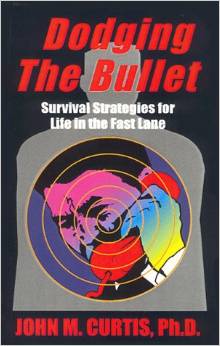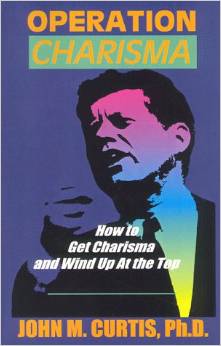Faced with a day of reckoning for publishing fake news on the Trump’s alleged Russian hoax, the New York Times and Washington Post repeat the same talking points as 61-year-old former FBI Director James Comey. Comey was fired by former President Donald Trump May 9, 2017 to leaking continuously to the New York Times and Washington Post about the Russian hoax. Soaked up by the New York Times and Washington Post, both papers spent the better part of Trump four years in office connecting him to the Kremlin, the exact campaign strategy used in 2016 by former Secretary of State Hillary Rodham Clinton. Comey told the press he had other “probable cause” to investigate Trump other than Hillary’s paid opposition research AKA “the Steele Dossier.” New York Times and Washington Post acknowledge that the Steele Dossier has been completely discredited.
Over four years of reporting the New York Times and Washington Post never cited any reliable source of information about Trump’s alleged ties to the Kremlin. Both papers used unnamed sources who used the bogus Steele Dossier to justify the FBI’s counterintelligence investigation of Trump and his 2016 campaign. Only when confronted about the now disgraced Steele Dossier did Comey try to justify his illegal counterintelligence investigation of Trump and his campaign, saying he used alternative sources. Yet the New York Times and Washington Post know that Comey never produced any information he claimed he had against Trump and his campaign. House Intelligence Committee Chairman Rep. Adam Schiff (D-Calif.) did exactly the same thing, never produced one shred of evidence. No one produced any evidence of Trump’s alleged Kremlin’s ties, because there weren’t any.
Now the New York Times and Washington Post try to save face, claiming there was more information than the Steele Dossier that linked Trump to the Kremlin. “Mr. Trump and his allies have insinuated that the FBI based the Russian investigation on the dossier. But when counterintelligence agents launched the effort July 30, 2016, they did not know about the dossier. An Inspector General report established that Mr. Steele’s reports reach that counterintelligence team on Sept. 19, 2016,” New York Times Charlie Savage wrote. Savage doesn’t admit that Comey had parts of the Steele Dossier much earlier than when BuzzFeed released parts of it in Jan. 2017. Hillary used parts of the Steele Dossier to discredit Trump through the 2016 presidential campaign, especially salacious allegations about a sex-pee video of Trump with prostitutes in Moscow in 2013 while hosting the Miss Universe Pageant.
Savage was ordered by his editors at the New York Times to say that they had more intel on Trump’s ties to the Kremlin than the now defunct Steele Dossier. New York Times and Washington Post reported on untold numbers of articles citing unnamed sources that Trump had close ties to the Kremlin, could be compromised as a presidential nominee. Hillary hit Trump with the Russian hoax Oct. 19, 2017 in Las Vegas at the last presidential debate, calling Trump a “Putin puppet.” But let there be no mistake, Comey told the media after his firing that he had other sources of intel linking Trump to the Kremlin other than Hillary’s Steele Dossier. Problem was, Comey never verified any of his sources, the same claims made by Schiff. Savage now says there’s much more intel before the Steele dossier on Trump’s alleged ties to the Kremlin. But like Comey and Schiff, there’s zero evidence reported.
New York Times and Washington Post are doubling down because 71-year-old Special Counsel John Durham is finally getting to the origin of Comey’s illegal counterintelligence investigation of Trump and his 2016 campaign. Savage asserts forcefully that Comey and other FBI investigators, including 77-year-old former Special Counsel Robert Mueller, had access to other sources of information. Neither Comey nor Mueller produced a scintilla of information other than fabrications in the Steele Dossier. Steele admitted in 2018 civil suit that there were no underlying sources or anything in his Dosseir because he deleted everything. But Durham has pointed out that any sources Steele named, including Igor Danchekno, lied or Steele just made everything up. Durham could very well go after the New York Times and Washington Post for reporting propaganda and disinformation.
New York Times and Washington Post know there were no other sources of intel related to Trump’s alleged dies with Moscow other than the fabricated Steele Dossier. Reporter Charlie Savage can’t produce one iota of alternative evidence about Trump’s alleged ties to the Kremlin because there aren’t any. “The Steele Dossier wasn’t tangential to the Trump-Russia investigation—it was a central & essential part of it,” Washington Examiner reporter Jerry Dunleavy tweeted. Durham’s getting closer to the real “big lie” about Trump’s ties to Moscow that the Steele Dossier was used to help Hillary beat Trump in 2016. When that backfired, the fake news media doubled down with more wild, unfounded claims of Trump’s Russian collusion. New York Times and Washington Post’s yellow journalism exposed how the Democrat Party infiltrated the newsrooms to push pure propaganda and disinformation.
About the Author
John M. Curtis writes politically neutral commentary analyzing spin in national and global news. He’s editor of OnlineColumnist.com and author of Dodging The Bullet and Operation Charisma.



